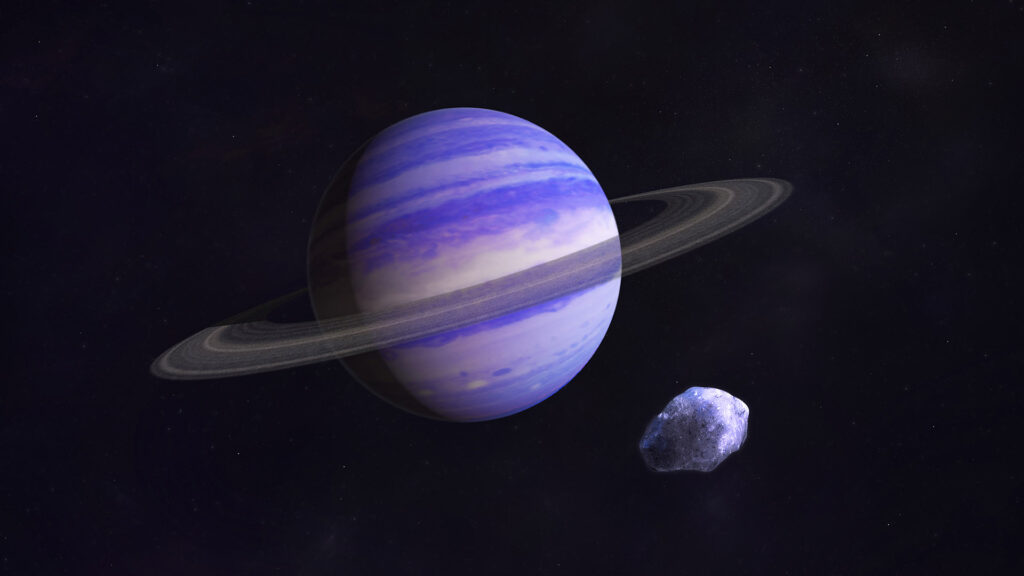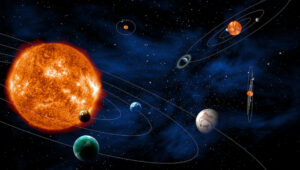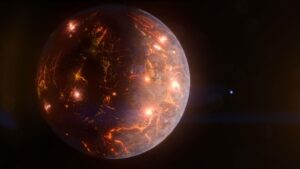Beyond Earth: Unveiling the Secrets of Habitable Exoplanets
10 min read
The quest for habitable exoplanets has ignited a fervor within the realms of astrophysics and space exploration. As we gaze beyond the confines of our own solar system, the tantalizing prospect of finding a celestial body capable of sustaining life captures our collective imagination. In this exploration, we will delve into the evolving science of exoplanet discovery, shedding light on the methodologies employed to identify these distant worlds.
The discovery of exoplanets dates back several decades, with technological advancements propelling our ability to detect these faint, distant orbs. Early efforts relied on ground-based telescopes, but the true breakthrough came with the deployment of space-based observatories. NASA’s Kepler Space Telescope launched in 2009, played a pivotal role in detecting thousands of exoplanets by monitoring the subtle dimming of stars as planets transited across them.
As we navigate the intricate landscape of exoplanet exploration, it becomes evident that the quest extends beyond mere identification. The parameters defining habitability are nuanced, encompassing factors beyond a planet’s proximity to its star. From atmospheric composition to magnetic field strength, the criteria for a habitable exoplanet are as diverse as the celestial bodies themselves.
Goldilocks Zone: The Habitability Sweet Spot

The concept of the Goldilocks Zone, often referred to as the habitable zone, emerges as a cornerstone in the search for potential abodes of life. This region around a star denotes the orbital range where conditions are just right for liquid water to exist—a fundamental ingredient for life as we know it. However, the Goldilocks Zone is not a one-size-fits-all prescription for habitability.
Similarly, having a solid foundation is super important for houses, just like planets need the right conditions. In Plano, people get how crucial it is to have a sturdy foundation. That’s where foundation repair in Plano comes in. It’s like giving your home the support it needs to stay strong over time, kind of like how planets need the right conditions to survive.
Considerations extend beyond mere distance from the host star. Atmospheric composition plays a crucial role in determining whether a planet’s surface can maintain temperatures suitable for liquid water. Venus, Earth’s neighbor, is a stark example of the impact of runaway greenhouse effects on a once potentially habitable planet.
Furthermore, the type of star in question introduces a layer of complexity. Red dwarfs, the most common stellar type in the universe, have habitable zones much closer to the star compared to larger, hotter stars. While this proximity raises concerns about stellar flares and radiation, it also expands the potential habitable real estate in the cosmos.
Just like the details about star types affect where life could exist, taking good care of folks in assisted living means paying attention to the little things. Quality care, much like understanding stars, involves special services like assisted living pharmacy services to meet the unique needs of residents, making sure they’re in a safe and supportive place.
Atmospheric Alchemy: Unraveling the Gases of Life
The atmospheres of exoplanets harbor invaluable clues about their potential habitability. Our own atmosphere, comprised mostly of nitrogen and oxygen, provides a breathable mix conducive to life as we know it. Detecting similar chemical imprints on distant worlds, however, requires cutting-edge technology and astute observational techniques. Observing planets through a telescope has never been more captivating. And what better way to enhance this experience than by indulging in some online shopping for delectable snacks? Not only can you treat yourself, but you can also find delightful surprises for your loved ones.
Spectroscopy emerges as a powerful tool in this endeavor, allowing scientists to analyze the composition of exoplanet atmospheres by studying the light they emit or absorb. The search for biosignatures, such as the presence of oxygen or methane, becomes a key focus. However, the challenge lies in distinguishing between natural processes and signs of extraterrestrial life.
As we peer into the atmospheres of distant exoplanets, the diversity of chemical combinations defies our preconceptions. From hydrogen-rich giants to water-vapor-dominated super-Earths, each presents a unique puzzle to solve. Deciphering the atmospheric alchemy of these distant realms unveils the complexity that underscores the search for habitable exoplanets.
The Galaxy has captivated the interest of many children, leading to its incorporation as a theme in numerous pediatric dental practices. Among these practices is the general pediatric dentistry office in Fayetteville NC, which has transformed this stunning cosmic beauty into a creatively themed dental studio.
Moons: Silent Witnesses to Extraterrestrial Habitability
While much attention is directed toward the host exoplanet, the role of moons in the habitability equation should not be overlooked. Moons, with their gravitational interactions and potential for geologic activity, can significantly influence the conditions on their parent planets.
Europa, one of Jupiter’s moons, exemplifies the potential habitability of these celestial companions. Deep beneath its icy crust lies a subsurface ocean, raising intriguing possibilities for life beyond Earth. The gravitational tugs from moons can also contribute to the stability of a planet’s axial tilt, preventing extreme climate variations that could jeopardize habitability.
As we expand our search criteria to include exomoons, the dynamic interplay between planetary bodies comes into sharper focus. The silent witnesses to extraterrestrial habitability, moons add another layer of complexity to the intricate tapestry of celestial bodies scattered across the cosmos.
The Pursuit of Technosignatures: Listening to the Cosmos

As we navigate the cosmos in search of habitable exoplanets, the quest extends beyond the confines of conventional biosignatures. While atmospheric compositions and the potential for liquid water are crucial factors, the exploration of technosignatures introduces a fascinating dimension to our interstellar investigation. Technosignatures are traces of advanced technology or industrial activity that could be detectable from Earth.
Like how we explore space, having a handyman in Colorado Springs is like having someone who’s good at fixing things up at home. It’s like looking for signs of good tools in space but for your house. Whether it’s a leaky faucet or electrical problems, a handyman makes sure your place is comfy and works well, a bit like making a planet cozy for us.
SETI, the Search for Extraterrestrial Intelligence, has long been at the forefront of this endeavor. Radio waves, a product of human technology, have been inadvertently leaking into space for over a century. The notion of detecting similar signals from distant exoplanets or civilizations represents a paradigm shift in our approach to understanding the universe.
The Green Bank Observatory and other radio telescopes around the globe tirelessly scan the skies, listening for signals that deviate from the natural radio frequency background. The tantalizing prospect of intercepting intentional messages or inadvertent transmissions from extraterrestrial civilizations fuels the imagination of scientists and the public alike.
However, the pursuit of technosignatures extends beyond radio waves. Advanced civilizations may leave other distinctive marks on the cosmos, ranging from megastructures like Dyson spheres that harvest the energy of their host star to artificial lighting that alters the brightness of a planet. The search for these technological fingerprints broadens our exploration horizon, pushing the boundaries of what we consider as potential indicators of extraterrestrial intelligence.
As we venture into this new frontier of exploration, ethical considerations arise. How should humanity respond if we detect unmistakable technosignatures from another civilization? The question prompts reflection on our role in the cosmic neighborhood and the potential implications of contact with an advanced extraterrestrial society. The creation of protocols and guidelines for such scenarios becomes an integral aspect of our expanding engagement with the cosmos.
Navigating the Exoplanet Zoo: Biodiversity Across the Cosmos
The catalog of known exoplanets continues to grow, resembling a diverse zoo of celestial bodies with unique characteristics and features. Beyond the familiar classifications of gas giants and rocky planets, the discovery of exotic worlds challenges our preconceptions about planetary diversity. From lava worlds with molten surfaces to ice giants shrouded in thick atmospheres, each addition to the exoplanet zoo expands our understanding of the possible configurations in the cosmos. The cosmos is constantly expanding, much like the opportunities in the business world, especially with the support of top mortgage companies in Raleigh NC who are always available to help kickstart big ideas.
Consider the case of Kepler-186f, an exoplanet located in the habitable zone of its host star. What sets it apart is its size; it’s only slightly larger than Earth. This discovery raises intriguing questions about the prevalence of Earth-sized planets within the habitable zones of other star systems. The exoplanet zoo becomes a tapestry of possibilities, with each celestial body contributing to our understanding of the vast array of planetary environments that could exist.
Furthermore, the study of exoplanet atmospheres reveals unexpected complexities. Clouds, haze, and dynamic weather patterns create a rich tapestry of atmospheric conditions. The diversity in atmospheric compositions, from hydrogen-helium envelopes to thick carbon dioxide atmospheres, challenges our assumptions about the potential habitability of these distant worlds. Just as scientists employ specialized tools like a turbine flow meter to guide the complexities of fluid dynamics, researchers use advanced instruments to decipher the nuanced details of exoplanet atmospheres. It’s akin to understanding the flow and composition of atmospheres light-years away, mirroring the precision needed in measuring fluid flow in our own scientific pursuits.
As we navigate the exoplanet zoo, the concept of planetary biodiversity takes on a new meaning. The quest for habitable exoplanets extends beyond finding Earth analogs to appreciating the unique adaptations and characteristics of each planetary species. The exoplanet zoo becomes a field guide, inviting us to explore the far reaches of the cosmos and appreciate the wonders of planetary diversity.
Now, when it comes to cool stuff, there are lots of jerseys out there, but we suggest adding a bit of space excitement to your wardrobe with a Real Madrid soccer jersey. It’s like bringing a burst of energy to your sports collection, connecting you to fans around the world, just like all those awesome planets in the universe.
Quantum Entanglement Communication: A Cosmic Internet?

The limitations of conventional communication technologies pose challenges to the prospect of interstellar communication. The vast distances between stars render traditional methods impractical, sparking exploration into unconventional means of cosmic connectivity. One such avenue is the exploration of quantum entanglement as a potential mechanism for instantaneous communication over interstellar distances.
Quantum entanglement is a phenomenon in which particles become interconnected, with the state of one particle instantaneously influencing the state of its entangled partner, regardless of the distance separating them. While harnessing this phenomenon for practical communication remains in the realm of theoretical physics, the implications for interstellar communication are profound.
If scientists could manipulate quantum entanglement to transmit information across vast cosmic distances, it could revolutionize our ability to communicate with potential extraterrestrial civilizations. The concept of a cosmic internet, where information travels instantaneously through entangled particles, opens new possibilities for interstellar collaboration and exchange of knowledge.
However, the challenges are formidable. Maintaining quantum entanglement over large distances and avoiding interference from cosmic phenomena represent significant hurdles. The exploration of quantum communication technologies pushes the boundaries of our understanding of fundamental physics and challenges us to envision new ways of interacting with the cosmos.
Exoplanetary Archaeology: Traces of Ancient Civilizations
While we’re busy looking for signs of aliens, exoplanetary archaeology opens the door to finding traces of ancient civilizations in space. The vastness of the cosmos might hold subtle hints of past cultures or technologies, like discovering old stories when door installers in New Jersey replace a door and uncover hidden history. It’s similar to peeking into the past of our universe through the remnants of celestial structures.
Looking for ancient stuff in space is like searching for really big things made by smart aliens. Dyson spheres, which are huge structures around stars to get power, are an example. If we see weird lights or heat from faraway stars, it might mean these big alien projects exist. It’s like finding hints of super-smart beings who lived a long time ago. And, just like that cosmic hunt, people around Westchester wanting to make their kitchens super nice can look into kitchen remodeling in Westchester. Both are about making things better, whether it’s a star system or a kitchen at home.
Additionally, the study of exoplanet atmospheres might reveal chemical imbalances or anomalies that could be attributed to industrial activities. Detecting these subtle signatures requires a combination of advanced spectroscopic techniques and a keen eye for deviations from natural processes. The exploration of exoplanetary archaeology challenges us to consider the possibility that we are not alone in leaving enduring marks on the cosmos.
As we sift through the vast troves of data collected by observatories and telescopes, the search for traces of ancient civilizations becomes a cosmic detective story. Each data point, each spectral line, carries the potential to unveil the secrets of civilizations that may have risen and fallen long before the emergence of human civilization on Earth.
In the relentless pursuit of understanding the cosmos, our exploration of habitable exoplanets has evolved into a multifaceted journey. From the exploration of technosignatures and the creation of a cosmic internet to the appreciation of planetary biodiversity and the quest for ancient civilizations, each avenue of inquiry opens new chapters in the grand narrative of our cosmic odyssey.
As we gaze into the depths of space, the secrets of habitable exoplanets remain elusive, yet the journey itself unfolds with unparalleled richness. The cosmos, with its myriad celestial bodies and mysteries, invites us to transcend the boundaries of our terrestrial perspective and embark on a voyage of discovery that knows no bounds.


